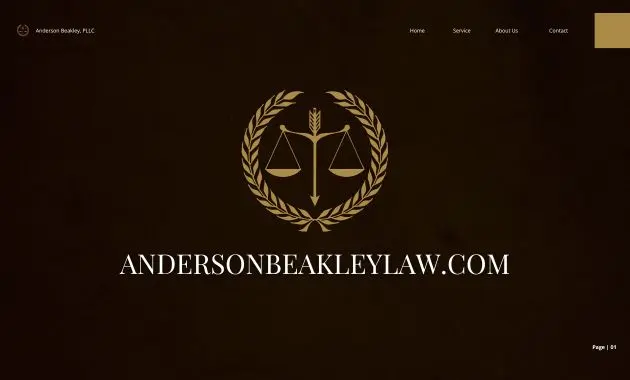Drug offenses law encompasses a complex web of legal regulations, societal consequences, and ongoing debates surrounding the production, distribution, and use of controlled substances. This area of law has evolved significantly over time, shaped by historical trends, cultural attitudes, and the evolving understanding of drug addiction and its impact on individuals and communities.
From the historical roots of prohibition to the contemporary focus on harm reduction and public health, drug offenses law presents a fascinating and multifaceted area of study. This exploration delves into the legal definitions, criminalization, sentencing practices, and societal impacts associated with drug offenses, providing a comprehensive understanding of this critical legal and social issue.
Criminalization and Sentencing
The criminalization of drugs and the associated sentencing practices have evolved significantly over time, resulting in a complex and often controversial legal landscape. This evolution has been shaped by a range of factors, including changing societal attitudes, scientific understanding of drug use, and political considerations.
Also Read
Historical Evolution of Drug Laws
The history of drug laws is intertwined with social, political, and economic factors. In the early 20th century, the United States began enacting laws to criminalize the use and possession of certain drugs, often driven by racist and xenophobic fears. For instance, the Harrison Narcotics Act of 1914 targeted opium and cocaine, which were associated with Chinese immigrants and African Americans, respectively. These early laws laid the foundation for the modern war on drugs, which intensified in the 1970s and 1980s. During this period, the use of mandatory minimum sentences for drug offenses became increasingly common, leading to a dramatic increase in incarceration rates, particularly for people of color.
Sentencing Models for Drug Offenses
Various sentencing models have been implemented for drug offenses, each with its own implications for the severity of punishment.
Mandatory Minimum Sentences
Mandatory minimum sentences are a type of determinate sentencing that requires judges to impose a minimum prison term for certain offenses, regardless of the specific circumstances of the case. For example, the Anti-Drug Abuse Act of 1986 established mandatory minimum sentences for offenses involving crack cocaine, which were significantly harsher than those for offenses involving powder cocaine. This disparity fueled concerns about racial bias in the criminal justice system, as crack cocaine was more commonly used by African Americans.
Determinate Sentencing
Determinate sentencing refers to a system where judges are given a fixed range of punishments for specific offenses. This approach aims to reduce judicial discretion and ensure consistency in sentencing. However, critics argue that determinate sentencing can lead to inflexible and overly harsh punishments, as it does not allow judges to consider mitigating factors.
Sentencing Guidelines
Sentencing guidelines provide judges with a framework for determining appropriate sentences for drug offenses. These guidelines typically consider factors such as the type and quantity of drugs involved, the defendant’s criminal history, and the role they played in the offense. However, sentencing guidelines can be complex and subject to interpretation, which can lead to inconsistencies in sentencing.
Variations in Sentencing Guidelines
Sentencing guidelines for drug offenses vary widely depending on the type and quantity of drugs involved. For example, offenses involving heroin or methamphetamine often carry more severe penalties than offenses involving marijuana. Additionally, the quantity of drugs seized can significantly impact the severity of the sentence. Possession of a small amount of marijuana may result in a fine or probation, while possession of a large quantity of heroin could lead to a lengthy prison sentence.
Rehabilitation and Treatment: Drug Offenses Law

Drug treatment and rehabilitation programs play a crucial role in addressing drug offenses. They aim to reduce recidivism rates, improve public safety, and enhance the well-being of individuals struggling with substance use disorders. By providing comprehensive support and interventions, these programs can help individuals break free from addiction, rebuild their lives, and become productive members of society.
Different Approaches to Drug Treatment
Effective drug treatment involves a multi-faceted approach that addresses the individual’s physical, psychological, and social needs. Different treatment modalities are available, each with its strengths and limitations.
- Therapy: Psychotherapy, including individual, group, and family therapy, helps individuals understand and address the underlying causes of their addiction, develop coping mechanisms, and build healthy relationships. Different therapeutic approaches, such as cognitive-behavioral therapy (CBT) and motivational interviewing, are commonly used to address drug use behaviors and promote long-term recovery.
- Medication: Medications can be an essential part of drug treatment, especially for individuals with severe substance use disorders. They can help manage withdrawal symptoms, reduce cravings, and prevent relapse. Commonly used medications include methadone for opioid addiction, buprenorphine for opioid addiction, and naltrexone for opioid and alcohol addiction.
- Community Support: Peer support groups, such as Alcoholics Anonymous (AA) and Narcotics Anonymous (NA), provide a safe and supportive environment for individuals in recovery to connect with others who understand their struggles. They offer mutual support, encouragement, and accountability, fostering a sense of community and reducing the risk of relapse.
Diversion Programs
Diversion programs provide an alternative to traditional criminal justice system processing for individuals with substance use disorders. They aim to address the underlying issues contributing to drug offenses and divert offenders from incarceration. Diversion programs often involve a combination of treatment, counseling, and support services.
- Drug Courts: Drug courts are specialized courts that focus on providing treatment and supervision to individuals with substance use disorders who are charged with drug-related offenses. Participants are required to undergo drug testing, treatment, and regular court appearances. Drug courts aim to promote accountability, reduce recidivism, and improve the lives of participants.
- Treatment-Oriented Probation: Treatment-oriented probation programs allow individuals convicted of drug offenses to receive treatment and support services as a condition of their probation. These programs typically involve drug testing, counseling, and participation in support groups. Treatment-oriented probation aims to reduce recidivism and promote long-term recovery.
The Role of Law Enforcement

Law enforcement agencies play a crucial role in combating drug offenses, employing a range of strategies to disrupt drug trafficking, prevent drug use, and enforce drug laws. Their efforts involve investigations, arrests, seizures, and collaborations with other agencies.
Strategies Used by Law Enforcement, Drug offenses law
Law enforcement agencies employ a multi-faceted approach to combat drug offenses, including:
- Intelligence Gathering: Law enforcement agencies utilize intelligence gathering techniques to identify drug trafficking networks, their operations, and key players. This involves gathering information from informants, analyzing financial transactions, and monitoring communication.
- Undercover Operations: Undercover officers infiltrate drug trafficking organizations to gather evidence and build cases. This involves posing as buyers, suppliers, or other roles within the drug trade, allowing them to gather information and identify key players.
- Surveillance: Surveillance techniques are used to monitor the activities of suspected drug traffickers, including physical surveillance, electronic surveillance, and tracking of financial transactions.
- Drug Seizures: Law enforcement conducts raids and searches to seize illegal drugs, drug manufacturing equipment, and other related materials. These operations are often coordinated with intelligence gathering and surveillance to maximize effectiveness.
- Community Policing: Law enforcement agencies engage with communities to address drug-related issues, build trust, and gather information. This includes community outreach programs, drug prevention education, and partnerships with community organizations.
Undercover Operations
Undercover operations involve law enforcement officers assuming false identities to infiltrate drug trafficking organizations and gather evidence. These operations can be complex and risky, requiring officers to maintain their cover while gathering information. The use of undercover operations raises ethical and legal challenges, as officers may have to engage in activities that are illegal, such as purchasing or selling drugs.
Surveillance
Surveillance is a crucial tool for law enforcement in drug investigations. It allows officers to monitor the activities of suspected drug traffickers, gather evidence, and identify potential targets for arrest. Surveillance techniques include:
- Physical Surveillance: Involves following suspects, observing their activities, and documenting their movements.
- Electronic Surveillance: Includes wiretapping, interception of electronic communications, and tracking of online activities.
- Financial Surveillance: Involves monitoring financial transactions to identify suspicious patterns and track the flow of drug money.
Drug Seizures
Drug seizures are a significant part of law enforcement’s efforts to combat drug offenses. They involve the seizure of illegal drugs, drug manufacturing equipment, and other related materials. Drug seizures can be conducted through raids, searches, and traffic stops.
The landscape of drug offenses law is constantly evolving, driven by scientific advancements, changing social attitudes, and the ongoing search for effective solutions to address the complex challenges associated with drug use and abuse. By understanding the historical context, legal frameworks, and societal consequences of drug offenses, we can engage in informed discussions about policy reform, harm reduction strategies, and the pursuit of a more just and equitable approach to drug-related issues.




